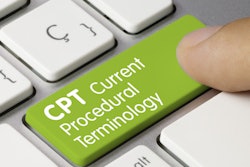
Most practices are aware that the ADA updates the Code on Dental Procedures and Nomenclature (CDT Code) each year. Each code update requires some research on the part of the practice's coding coordinator and persistence on the part of those providing and coding the care.
 Christine Alfano is the senior director of corporate and dental channel marketing at Vyne.
Christine Alfano is the senior director of corporate and dental channel marketing at Vyne.It is crucial for a practice's revenue that dental coding professionals must maintain awareness of all the codes undergoing change. In 2019, among the most often used codes, many concern the use of a space maintainer. Here is the specific language of the updated code descriptions for the changed codes related to space maintainers:
- Code D1516 concerns the space maintainer that is fixed, bilateral, and maxillary.
- Code D1517 concerns the fixed, bilateral, mandibular space maintainer.
- Code D1526 focuses on the removable, bilateral, and maxillary space maintainer.
- Code D1527 focuses on the removable, bilateral, and mandibular space maintainer.
Prosthetics and partials
Other important changes to the codes include those that address removable prosthetics. For some, these codes can be problematic because they are not used, generally, as much as the codes mentioned above. For the most part, the following revisions were implemented because of changes to technology and materials:
- Code 5211 (maxillary partial denture) covers the resin base, including any conventional clasps, rests and teeth retentive/clasping materials, rests, and teeth.
- Code 5212 (mandibular partial denture) covers the resin base, including any conventional clasp retentive/clasping materials, rests, and teeth.
- Code D5630 (repair or replace broken clasp retentive clasping materials -- per tooth) is not a new code, but it has been updated to remove the previous reference to the "clasp" in the 2018 definition of the code.
When dealing with partials and dentures, it is important to look at tooth loss and frequency limitations. These will be important to the practice and how you are able to bill patients and payors. To best manage this, call payors before a patient appointment, if possible, to ensure the best experience for the patient. You may have to move forward with treatment without the benefits coverage.
Planning ahead
Typically, plans will start sending updates about policy changes for the new year during the fourth quarter. The key message is that as much as the practice of dentistry can stay the same, nothing ever stays the same. Updates to codes can mean a change in the materials used, limitations to procedures (which is standard practice), and how procedures are processed.
Christine Alfano is the senior director of corporate and dental channel marketing at NEA powered by Vyne.
The comments and observations expressed herein do not necessarily reflect the opinions of DrBicuspid.com, nor should they be construed as an endorsement or admonishment of any particular idea, vendor, or organization.


















